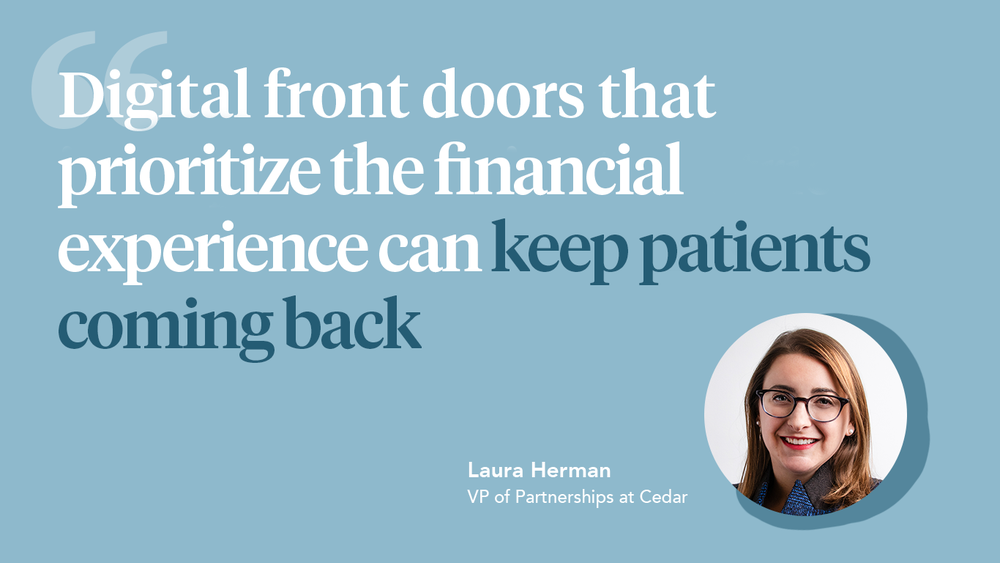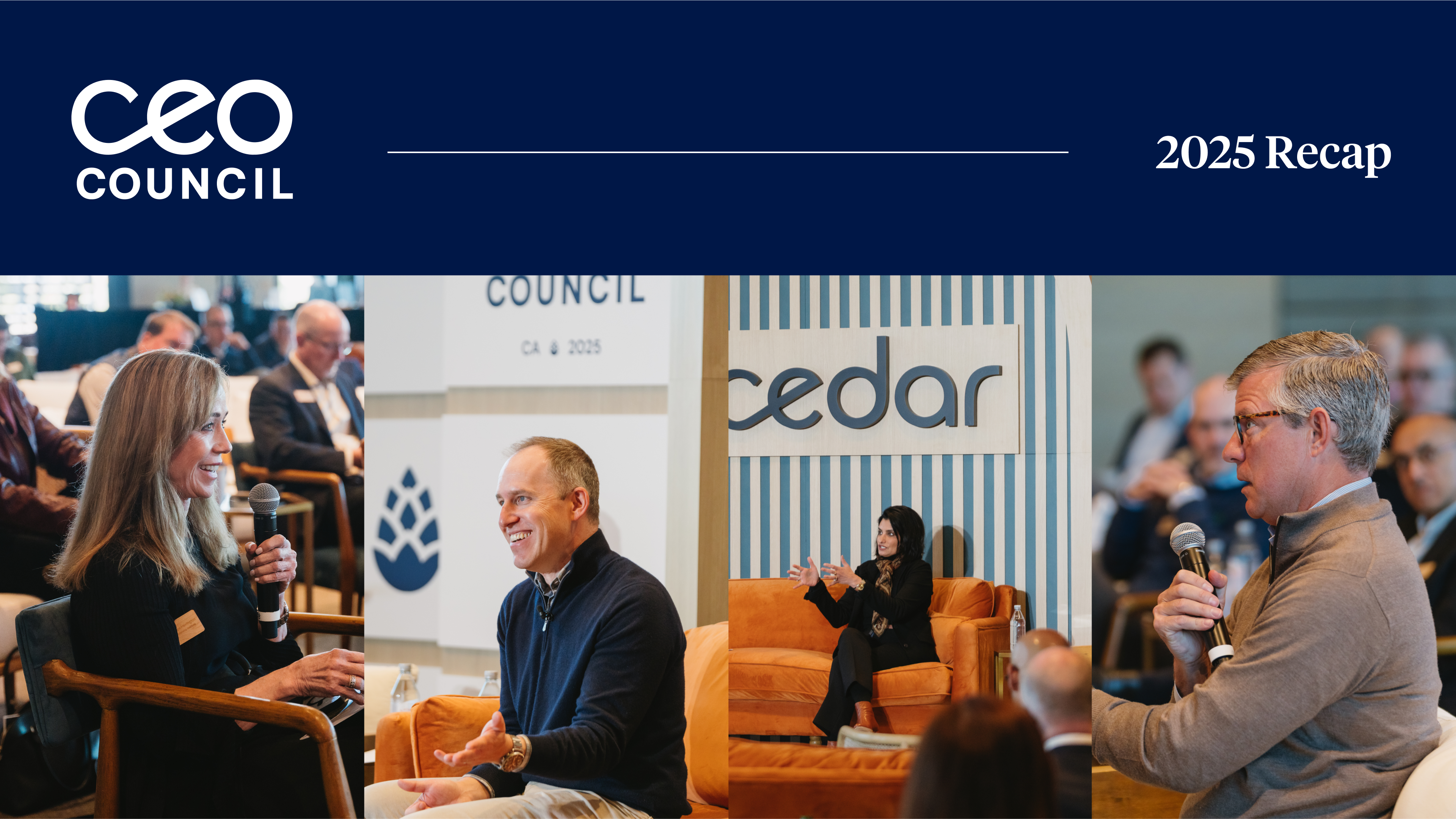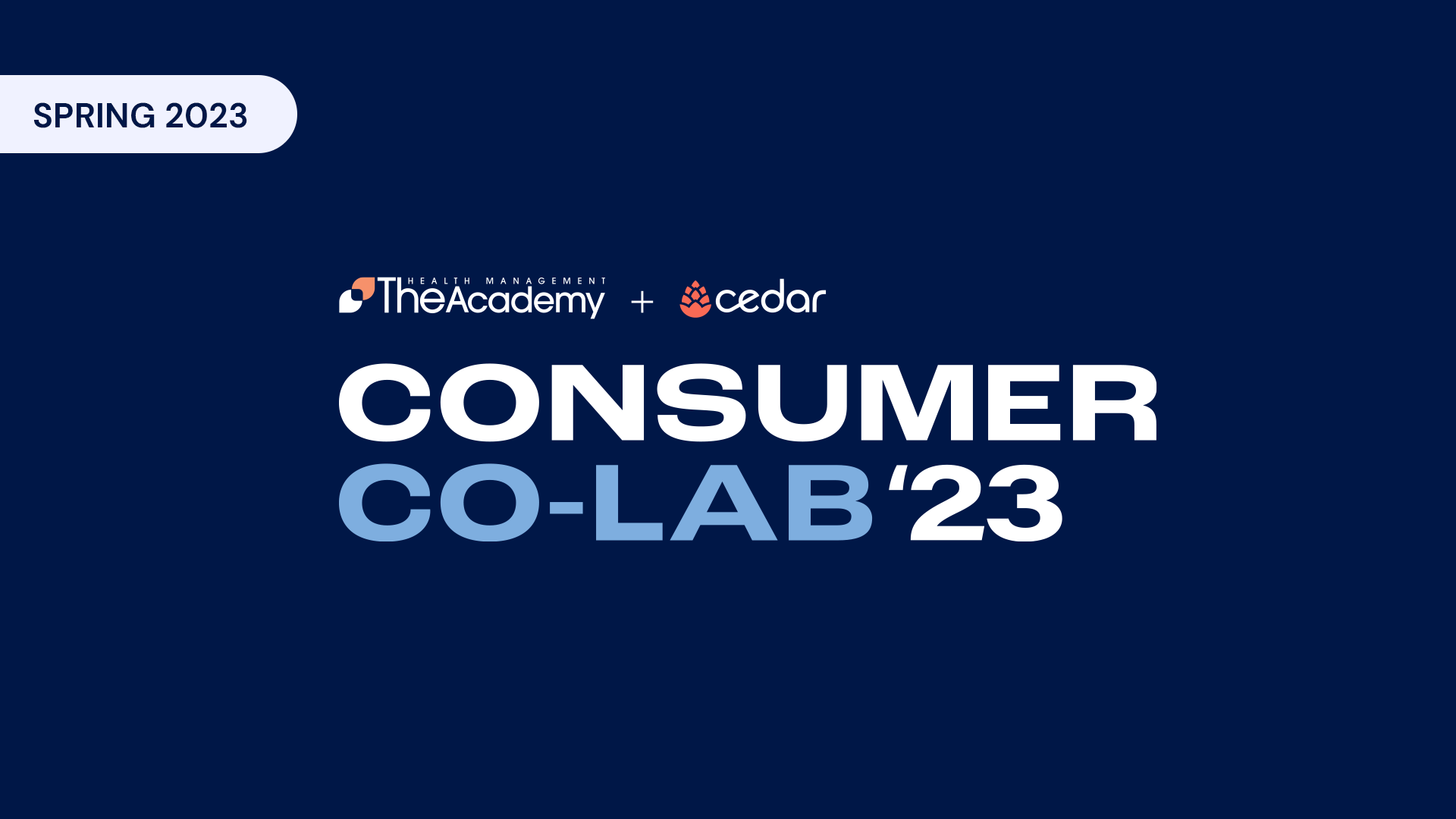While the digital front door in healthcare is certainly not a new concept, the novel coronavirus pandemic has created a heightened sense of urgency for providers to adopt best-in-class technology that enables a more engaging healthcare consumer experience. What was once considered “nice to have” is now business critical—so much so that digital front door initiatives are gaining board-level awareness.
To help healthcare organizations navigate the digital tech landscape, Cedar recently teamed up with the Advisory Board for a virtual event focused on the financial engagement aspects of digital front door strategy as part of their Digital Health Spotlight Series. Throughout the session, Laura Herman, VP of Partnerships at Cedar, demonstrated why delivering a holistic patient financial experience is critical to an effective digital front door strategy, as well as how Cedar uses design thinking to solve real healthcare consumer challenges.
Below are some of the key takeaways from the discussion that can help healthcare providers optimize their digital front doors:
Takeaway #1: A bad billing experience can overshadow an otherwise outstanding digital front door strategy
A common misconception about digital front doors is that they only encompass the series of initial patient-provider interactions leading up to a visit. While this phase of the patient journey is important to get right, digital front doors should extend beyond intake and engage and empower patients across all digital touchpoints within a patient journey, including post-visit billing.
Everyone has a story about a bad medical billing experience—whether personal or anecdotal—and oftentimes these negative experiences have an outsized impact on consumers’ perceptions of their providers. In fact, research suggests that not only are patients frustrated with the financial experience as well as providers’ lack of adoption of digital processes, some are even willing to switch:
- 1 in 3 patients don’t think that healthcare providers have done enough to improve the patient billing and payment experience
- 45% of patients (a plurality) rate the post-visit phase (billing, insurance, follow up, etc.) as the worst part of the healthcare journey
- 2 in 3 patients would consider switching providers that offered a better payment experience (source: Advisory Board)
- 1 in 5 patients left a provider because of a poor digital experience
“It’s no longer the ‘last, best experience’ that’s driving consumer expectations; exceptional, end-to-end digital experiences are table stakes,” said Herman. “Innovative health systems understand that digital front doors that prioritize the patient financial experience—in addition to pre-visit touchpoints like self-serve scheduling and registration—have the potential to not only attract patients, but keep them coming back.”
Takeaway #2: Text reminders and online bill pay aren’t enough; a standout patient financial experience should make sense for the individual
Cedar’s core thesis is that when providers deliver a better patient experience, they’re more likely to drive meaningful engagement and improved financial outcomes. But, in order for providers to deliver the types of experiences that patients remember, they must make them feel personalized, effortless and empathetic.
Herman explained how Cedar’s data-powered platform and patient-centered features help healthcare organizations give patients a differentiated bill pay experience, and highlighted several examples within the product:
Optimized outbound communications
At one point or another, we’ve all received a medical bill in the mail and hung it on the refrigerator, only to never look at it again (the same could probably be said of monthly email and text message reminders, sans the refrigerator). Cedar’s platform helps patients take action and actually resolve their obligations by determining the optimal channel, message content and timing to communicate billing reminders, which is why we consistently see upwards of 70% digital adoption rates. We’re also constantly testing new outreach strategies to ensure we’re striking the right balance between patient engagement and satisfaction.
Frictionless bill pay
During a time when features like single-click payment and autopay are the norm, it’s no wonder that providers struggle to deliver a bill pay experience on par with consumer expectations. To remove barriers to engagement, Cedar’s development teams proactively identify friction points across the financial experience and design product solutions to mitigate them. Example features include three-click guest checkout, consolidated bills with patient-friendly service code descriptions and modern payment methods like Apple Pay and Google Pay, amongst others.
Pathways to bill resolution
Some patients can’t pay their bills outright and need help finding solutions beyond payment to resolve their accounts. To enable providers to better assist these patients, we surface self-serve bill resolution options—including digital insurance capture, claim adjustment and denial notifications and live chat — and do so while patients are still at the point of engagement.
Takeaway #3: To build a better digital front door, providers need to work with tech partners that use design as a strategy, not a feature
Historically, healthcare has been fraught with patient-facing apps that have clunky user experiences and go unused (see patient portals). While this deficiency may be symptomatic of the nature of enterprise distribution channels (i.e., healthcare buyers having incentives independent of what patient users want), it doesn’t have to be that way.
Again, Cedar believes that what’s good for patients is good for providers, which is why we take a user-obsessed approach to product conception. We prioritize solutions that address real problems for users, not those that might look good on a feature checklist. To drive this point home, Herman showcased several case studies that gave attendees an inside look into how Cedar uses design-led problem solving to develop products:
Cracking the millennial mindset
In 2019, Cedar’s data science team noticed that millennial patients were less likely to pay their medical bills compared to other generational cohorts, and brought it to the attention of our product designers to understand why. In collaboration with the preeminent design firm IDEO, Cedar embarked on a comprehensive user research study to better understand the attitudes and behaviors of millennial patients with respect to their healthcare obligations, the output of which was a set of behavioral archetypes to help inform product development. To dig deeper, check out our blog series that details the study as well as how we put the archetypes into practice.
Prioritizing the patient experience during COVID-19
When it became clear that the COVID-19 outbreak was widespread and financial consequences for consumers were imminent, Cedar was quick to employ design thinking to develop solutions that enabled providers to better serve patients (learn more about specific product updates in this blog post). Additionally, we conducted user interviews with real consumers several months into the pandemic to understand how it has impacted their lives, and are currently using these insights to shape our product development roadmap.
To conclude the session, Herman explained that in order for healthcare organizations to truly optimize digital front doors, “meaningful financial engagement needs to happen before patients present for care.” This set the stage for a preview of where Cedar is headed, including the upcoming roll out of our pre-visit solutions and end-to-end patient financial engagement platform.
To learn more about how Cedar is empowering providers to up-level their digital front doors, get in touch with one of our patient financial experience experts today.



